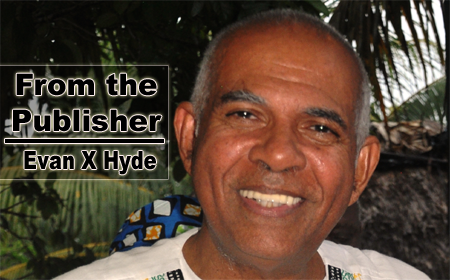Academics are not generally known as being physical, although in the United States the student/athlete category is prized. In British Honduras/ Belize, I guess it is difficult to advance to the tertiary level and beyond in academia if you are running with your roots contemporaries in the streets. It is for this reason that I believe most of our Belizean academics are not contributing to the liberation of our people: our academics are not contributing their knowledge to the public discourse because they are intimidated by the politicians and their cronies. For Belizean academics, discretion is the better part of valor. Our academics are, as the Americans say, nerds.
When I went to the University College of Belize in late 1999 as chairman of the board, I was astounded and disappointed to discover that UCB had no history department. UCB was mostly about business, tourism hospitality, and the like.
I do not consider myself a physical person, but after I managed to complete a first degree in 1968, I believed that I had to take what knowledge I had acquired back home to my people. I considered this a matter of urgency. I knew that there was a lot more knowledge out there to be acquired, but I was young and impatient. I believed that if I opened the eyes of our young Belizeans, they would then take the ball to the goal, so to speak. I was only going to light the fire.
I had done History at the Ordinary Level at St. John’s College and at the Advanced Level at SJC Sixth Form. During those six years between 1959 and 1965, I learned nothing about the Caste War in the Yucatan. I had noticed from an early age that there was this period between the 1830s and 1880s where there was very, very little about our history in this settlement of Belize.
Since it was because of the Caste War that our two northern districts, Corozal and Orange Walk, were essentially populated by refugees of said war in the latter part of the nineteenth century, I found it very strange that we young Belizeans had never been taught anything about the Caste War. I thought it was an insult, really, and this was where my personal rebellion began.
Locked up in Belize Town/City as generations of black Belizeans had been, most of us did not know that the real center of industrial activity by the superpower Belize Estate and Produce Company (BEC) was in Gallon Jug, which I believe is in the Orange Walk District. It seems to me that there was a point where the woodcutters in the settlement of Belize began to move north instead of west along the Belize Old River, as they had been doing for centuries.
Some people say that there is a rivalry between Corozal and Orange Walk because the Corozal people are descended from the Santa Cruz Maya, whereas the Orange Walk people are Icaiche Maya. The Santa Cruz Maya were more from the southeastern part of the Yucatan, whereas the Icaiche Maya came more from the western part of the Yucatan, around Campeche, say.
Once the Caste War broke out in 1847, the British here (which is to say, I presume, BEC) began to play games with the Santa Cruz Maya, selling them guns and gunpowder to fight the oligarchical Spanish element which had been oppressing the Santa Cruz Maya. But, it appears to me that the Icaiche Maya were more interested in demanding rents from the British woodcutters who were encroaching on their ancestral territory.
This is how we come to the war between the Icaiche Maya and the British, which ended up with the Icaiche Maya leader, Marcos Canul, being killed by the British West India Regiment element in 1872.
It has always been amazing to me how absolutely little we Belizeans know about the British West India Regiments. These soldiers were brought here from somewhere in the West Indies to help BEC and the woodcutting settlers fight the Icaiche Maya. The mystery for me has always been what percentage of the British West India Regiments were black, because the size of that percentage would affect historically the relationship between the people of Orange Walk and the people of Belize Town/City.
In my young days, there was nowhere you could go to find out anything about these British West India Regiments. Today, there is, praise God, the internet. I went to Google.com and found the following on Wikipedia: “The British West India Regiments were infantry units of the British Army recruited from and normally stationed in the British colonies of the Caribbean between 1795 and 1927. In 1888, the two West India Regiments then in existence were reduced to a single unit of two battalions.”
So that, I had no choice but to return, for the third time at least, to Peter Ashdown’s paper on “The problem of Creole historiography.” Sometimes it seems to me that all our academics in Belize want to tell us about is Judeo-Christianity. Listen here, beloved. You can’t understand the undercurrents of The Jewel if you are completely ignorant about the Caste War. We Belizeans, in 2022, are too British. We must respect Marcos Canul. He shed his blood for his people.

